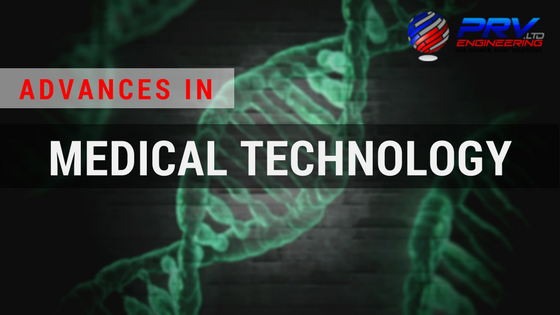
Medical Technology – The future is now
The world we live in changes every single day. Whether it’s a new breakthrough medical technology, advances in energy storage or space travel. Our future is becoming harder to predict. I mean, who knows where we will be at the end of 2017? What treatments or life altering medicines will be available to us in only a few short months?
Many of the breakthroughs we have today weren’t available 5 years ago; some weren’t even around last year. Scientists, researchers and doctors are working tirelessly to find new ways to treat different diseases, conditions or ailments. Some of the new medical advances will certainly improve your life but others might even save you.
-
Augmented Reality (AR) in Healthcare Education
Medical students can attest to the challenges they face throughout their studies. Doctors in training have so much to do before they even start their internship; not to mention the pressures of knowing and understanding human anatomy.
3D technology is not new to the medical industry but there are some seriously good 3D training tools available. EchoPixel Inc is just one of a few companies with advanced medical visualisation software. It takes data from a CT or MRI scan and transforms it into a 3D holographic image. This allows doctors to view and interact with a patient’s organs as if they were handling it themselves.
3D4Medical is another company with some of the world’s best medical software platforms. It’s literally transforming medical school. Students and doctors can learn anatomy without even practicing on a cadaver.
-
Internet of Things (IoT) and healthcare
IoT has been a topic of discussion for quite some time. In a nutshell, IoT is the networking between devices, vehicles and buildings embedded with electronics, software, sensors and network connectivity. In healthcare, IoT can drastically improve a number of facets:
- Remote monitoring of patient’s health
- Hospital asset management
- Data analysis apps for medical professionals and patients
- Predictive device maintenance notification
- HIPAA-compliant data security
In addition, IoT devices can help monitor environmental conditions such as refrigerator temperatures, personal hygiene protocols and more.
-
3D Printed Medicine
3D printing is mostly associated with the manufacturing industry. This process is also called stereolithography and can create almost any type of object by fusing together different materials in various layers.
3D printing has been used in healthcare for more than 15 years making prosthesis and dental implants. Now, personalised healthcare technology is at our fingertips. Tablets can be printed using personalised dosages and a combination of ingredients to treat multiple conditions. Doctors and pharmacists can use a patient’s personal information like age, gender and race to produce the required dosage unique to each individual. No more relying on the standard dosage and prescribing accordingly.
Printing drugs firsthand means it is easier to understand the ingredients and the release profiles. 3D printing makes it possible to include a binder onto a bed of layers which creates a barrier between the active ingredients. This allows researchers to closely study the release and make adjustments where needed.
-
Leadless Pacemakers
Medical technology has greatly improved since the 1960’s when Dr Wilson Greatbatch accidentally invented the first pacemaker. It was a simple oscillator design which has been redesigned over the years to what we have now.
Medtronic and St Jude Medical have developed pacemakers that greatly reduce potential risks of transvenous pacemakers. Instead of the device being placed in a patient’s chest with leads going to the heart, the new pacemakers go directly into the heart without any leads. They are self-contained, considerably smaller, does not require a chest incision and no permanent lump under the skin. For more details, check out the Micra and Nanostim leadless pacemakers.
The speed at which medical technology is advancing means science fiction is no longer just on your TV screen. Some cutting edge technology seems unbelievable but do some research in your own time. Facial reconstruction was seen as a myth a few years back and we know now it is possible and life changing. Just take a look at a few we haven’t mentioned in detail:
- Genome splicing
- Bionic eye
- Bio-absorbable stents
- Bio-electronics
- Jawbone UP2 Activity Tracker
PRV Engineering provides services to the pharmaceutical and medical sectors. We run state of the art machining centres where the latest inspection probing systems are installed. In addition, they have a temperature controlled inspection department which not only houses the conventional testing and inspection equipment, but also runs the latest Renishaw PH20 measuring equipment.
We manufacture products in all materials from the most basic mild steels to the more exotic ones like Monnel, Inconnel, Hastalloy and Titanium. Quality of service is at the forefront of anything we do. We are proud to be CIPS registered and a graduate of the Costain Supply Chain Academy, in addition to holding a host of other recognised accreditations.
This site uses Akismet to reduce spam. Learn how your comment data is processed.


 Mail:
Mail: 




Leave a Comments